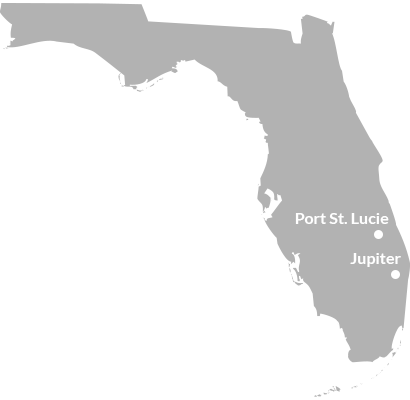There are many native grasses that make up the beautiful landscapes in Florida. The most popular grass chosen in Florida is St. Augustine. This course textured grass will produce dark green dense grass. It easily adapts to any soil types including salty areas. This grass also does well in shade. Bahia grass is another favorite among choices. This grass requires low maintenance and does well in times of drought or no fertilization. Besides being a reasonable price, Bahia grass has low chances of having diseases and insects.
Bermuda grass has a high maintenance demand and a good salt tolerance. This grass is popular to many golf courses or athletic fields. Zoysia grass has been being used more frequently in Florida lawns. This grass has a dark green look and has a shorter and finer texture compared to St. Augustine. The positive side to growing this grass is it needs less fertilizer and has a high tolerance to shade, traffic, and salt. Sea paspalum is an aggressive growing grass known for its salt tolerance. It is chosen for Florida Golf Courses because it survives well when mowed low. This grass is favored near the ocean or wherever ocean water makes contact.
Make good use out of your clippings!
Grasscycling can save you money and time on your grass. After mowing your lawn, leave the clippings alone. Let your clippings decompose. Decomposition of grass is fast because Grass clippings are 90% water. If left to decompose on your lawn, it will release nitrogen to the soil equaling 1-2 fertilization applications. Grasscycling also will save you: time on raking, buying bags to fill, and less garbage at the landfill. It is also a great way to reduce our waste consumption each year.
Follow these easy tips for the Healthy Lawn you desire:
- Mow grass only when it is dry. This decreases stress on the lawn.
- Be sure your mower blade is set to the correct height of your grass. Scalping (cutting to low on your grass) will cause a great amount of stress on your lawn, burning from the direct sun, and becoming dry more quickly causing need of more water.
- Only cut 1/3 of grass blade at each mow.
- Keep mower blades sharp. Ragged cut grass blades are prone to diseases.
- Mow your lawn in different directions each time to reduce the chance of scalping.
- Allow grass clipping to decompose on your lawn giving it an extra boost of nitrogen.
- Wash your mower down to reduce the chance of weed seed movement
Use the chart below to get the accurate mowing height for your lawn.
Grass Type: Mowing Height
St. Augustine 2.5-4”
Bahia 3-4”
Bermuda .5-1.2”
Zoysia 1-2”
Sea Paspalum .75-1.5”
Click Here or Call (772) 334-7007 for a Free Lawn Care Evaluation Today!
We are dedicated to providing the best results with inexpensive solutions for Florida’s Treasure Coast residents. Act Now before you become a chinch bug statistic. Reynolds Pest Management lawn and shrub technicians are also Green Industries Best Management Practices trained and certified.


